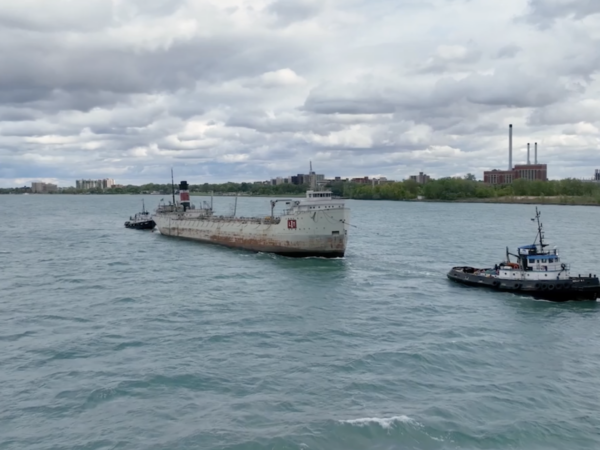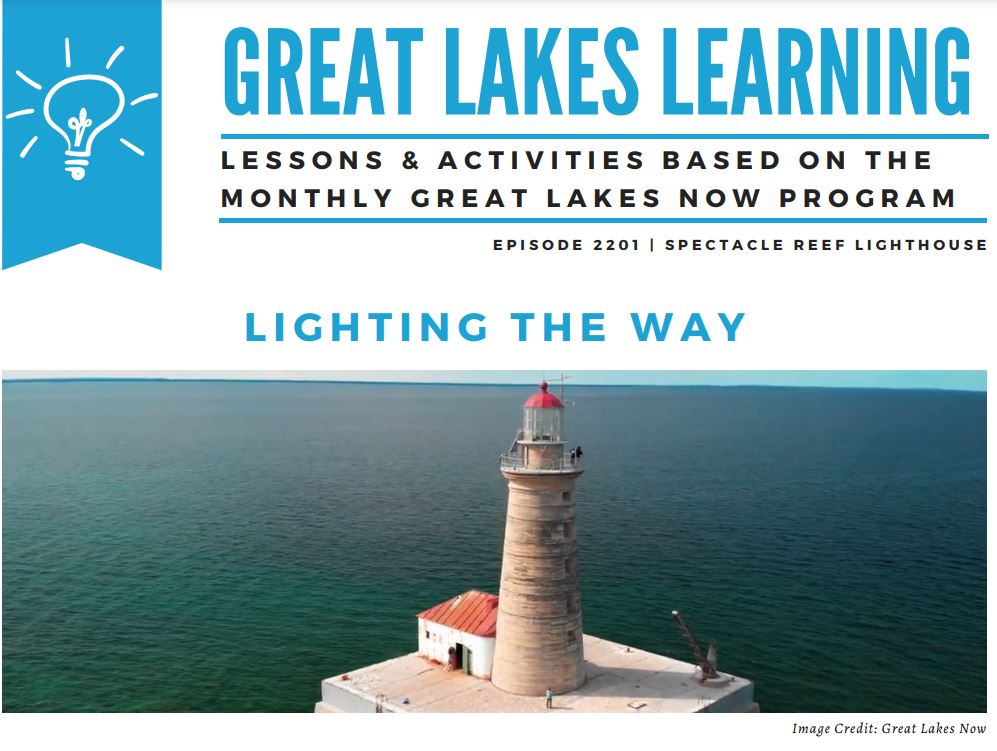
From the segment “Love for a Lighthouse” comes an activity where students can imagine what it was like to live in a Great Lakes lighthouse and a STEM lesson plan teaching students how to measure the light’s intensity.
Another Great Lakes Now lesson plan guides students in building their own aluminum foil boats and testing their buoyancy by loading them with pennies, after taking them on a virtual visit to the Great Lakes Boat Building School.
And after watching the segment where two politicians from different countries discuss contentious issues of drinking water contamination and nuclear storage, students can learn how to present different points of view, rotating through varying perspectives to make reasoned arguments.
The new Great Lakes Now collection of interactive educational activities helps students — and adults — learn school subjects and life lessons beyond the monthly TV program. As the fourth collection produced, it promises to add to educators’ toolkits for Great Lakes learning.
Aligned with national education standards, the free lesson plans are easily downloadable and organized into manageable sections with handouts to engage learners with the science and study of the Great Lakes as well.
Monthly Lesson PlansFree Teaching Resources

Lessons and activities based on our monthly Great Lakes Now program are available to download for free.
New lesson plans will be added each month as a part of a redesign of the Great Lakes Now educational initiative coordinated with the Michigan Learning Channel, a 24/7 on-air channel with on-demand video and lessons on their website.
Great Lakes Now previously released three other sets of lesson plans and learning activities around mainly math and science. Collection 1 provided an introductory overview of the Great Lakes while Collection 2 focused on threats like climate change, invasive species and varying water levels. Collection 3 is a series of virtual field trips.
Now, Great Lakes Now is announcing Collection 4. New modules of videos, articles, lesson plans and handouts will be released each month and will include a variety of subjects and activities around the videos and articles produced as part of the Great Lakes Now initiative.
Michigan Teacher of the Year Gary Abud Jr., a former high school science teacher and now educational consultant, develops the lesson plans in conjunction with new segments from the monthly Great Lakes Now program. The show launched in 2019 and has received numerous public television, broadcasting and journalism awards. Each episode features a magazine-style format with features about the environment, science, culture, history, politics and recreation of the Great Lakes region.
The Great Lakes Now lesson plans are “learner-centered, ready-to-teach, and fun,” Abud said. “They are interactive, hands-on, and minds-on activities that incorporate some of the most high-impact, core teaching practices and student engagement strategies supported by the currently available evidence on learning.
“Teachers will love teaching these lessons, but students will enjoy them even more.”
New Episode, New Lesson Plans
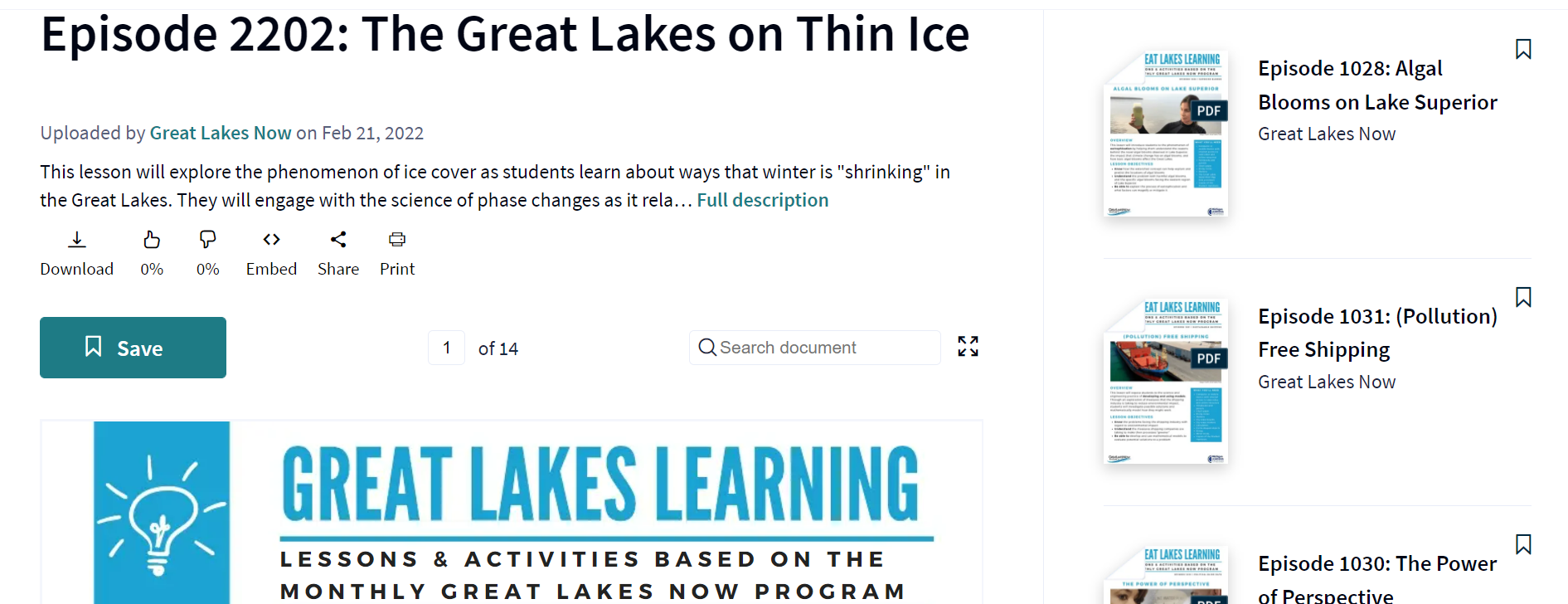
New modules of videos, articles, lesson plans and handouts will be released each month in conjunction with our show.
The latest Great Lakes Now episode is titled “Shrinking Winter.” It takes viewers out on the Lakes to examine how scientists are working to understand the causes and potential effects of less ice cover on the Great Lakes. The audience also “accompanies” a documentary photographer and three longtime ice anglers who reflect on changes to the winter fishing season. Also included: a competitive speed skater who shares the joys of “wild ice.”
The new lesson plan has students explore the shrinking ice in a Minnesota Lake, analyze the available historical data of Great Lakes ice coverage from NOAA’s Great Lakes Environmental Research Laboratory, conduct an experiment to measure the temperature of melting ice, and engineer a thermos out of household materials to minimize temperature changes to a hot beverage in cold conditions.
Partners at PBS Stations
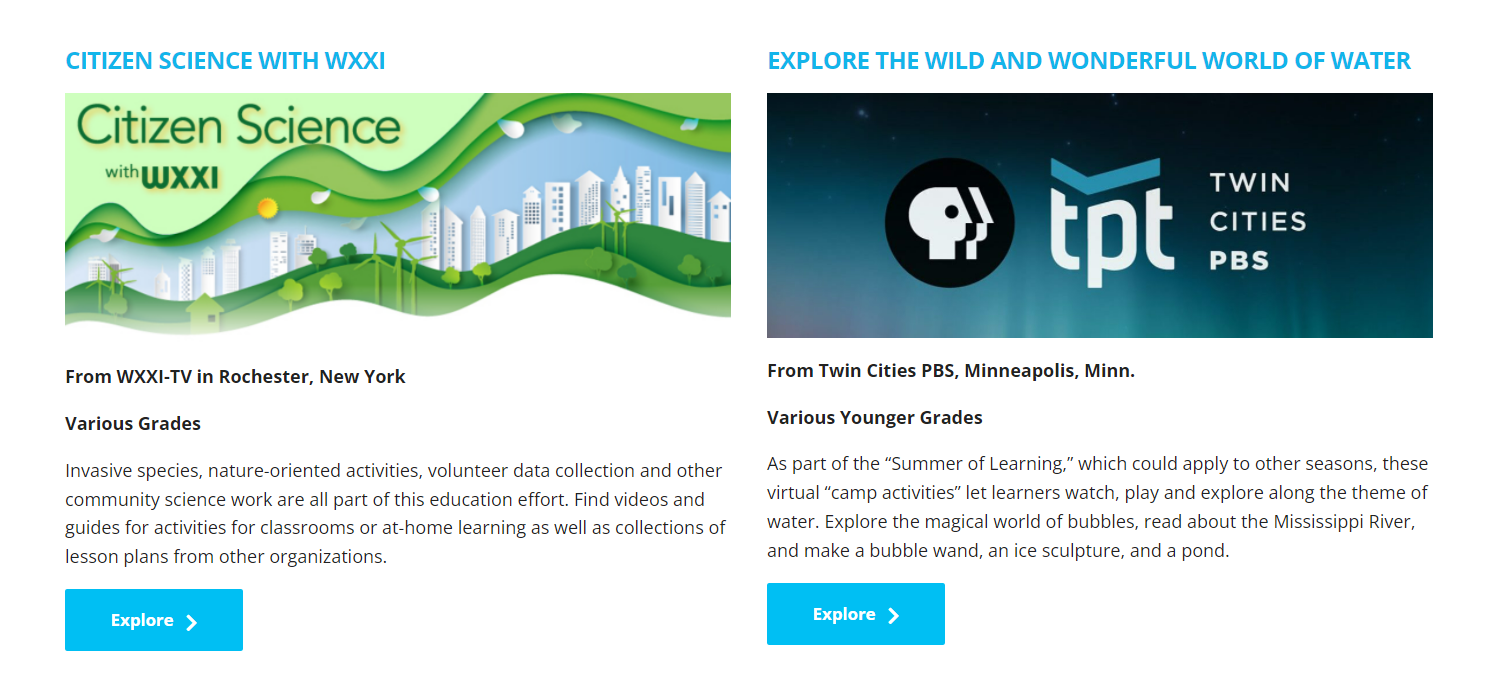
A screengrab of our new curated page of PBS station educational programs.
The new Great Lakes Now educational resources also include a curated page of curriculum and learning materials from locally produced PBS station programs and documentaries from various Great Lakes States. Click HERE to see them.
“We looked at stations from Duluth, Minnesota to the eastern end of the Great Lakes system and collected their educational materials,” said Sandra Svoboda, Great Lakes Now program director. “What a range of science, math, history and other subjects. I learned a lot from them, and we know that students will too.”
A number of placed-based documentaries offer lessons that apply to other sites around the Great Lakes, for example. Some stations produce regular public affairs programs that also share educational content. All of this is shared on the Great Lakes Now education page along with the target grade level for easy reference.
“Our mission is to create a shared sense of stewardship and identity in our unique region,” Svoboda said. “It was refreshing to see how much PBS station content existed, and it was our pleasure to share lesson plans for teachers, parents and students here on our site for people in the Great Lakes and beyond.”
Trusted Journalism with Classroom Science
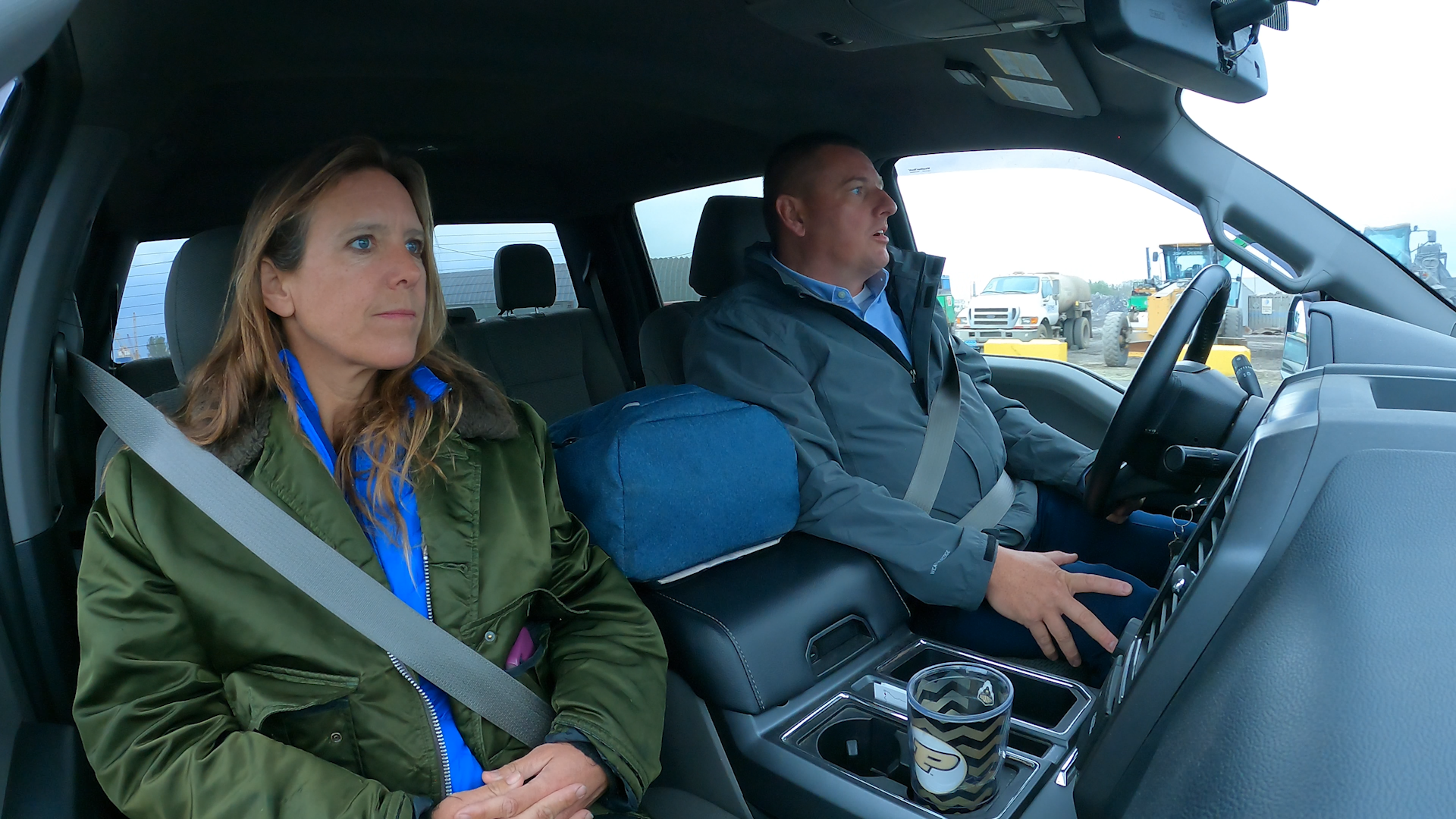
Reporter Kari Lydersen talks with Port Director Ryan McCoy. (Great Lakes Now Episode 1031)
Two of the video segments and coordinated articles used as the basis for this lesson plan series were produced in part with support from two national journalism organizations.
Last year, GLN Contributor Sharon Oosthoek, a Toronto, Ontario-based journalist, reported and wrote two stories about algal blooms in Lake Superior. Her articles were the basis, in part, for the “Superior Blooms” segment, which debuted on Detroit Public Television’s airing of Great Lakes Now in August. All this work was supported by the Fund for Environmental Journalism, and Abud based a set of learning activities on the stories and segment.
Here are her stories and the lesson plans:
Episode 1028 Lesson Plans: Algal Blooms on Lake Superior
Lake Superior Summer: Blue-green algal blooms come to a lake once believed immune
Lake Superior Winter: Researchers belatedly turn their eyes to the impact of warming winters
In addition, another lesson plan is based on the reporting from a project supported by the Solutions Journalism Network. GLN Contributor Kari Lydersen authored a series of articles about how Great Lakes ports and the shipping industry are making efforts toward sustainability. Her work also was the basis for a Great Lakes Now show segment “Sustainable Shipping,” and accompanying educational materials.
Here are her stories and the lesson plans:
Episode 1031: (Pollution) Free Shipping
Green Marine: Are voluntary efforts enough to improve port sustainability?
Sustainable Shipping: Burns Harbor port tries to green Indiana’s industrial coast
Sustainable Shipping: At the Port of Milwaukee the wind blows toward a greener future
Sustainable Shipping: The Port of Montreal’s role as the Great Lakes’ green gateway
In the “(Pollution) Free Shipping” lesson plan, students, as Lydersen did in her reporting, explore the impact of secondary industrial pollution at Burns Harbor port near the Indiana Dunes National Park. In this module, students will learn how mathematical modeling helps scientists, researchers, and industry leaders measure the potential outcomes of possible solutions to reduce the environmental impact of the port and industry on the region.
Catch more news at Great Lakes Now:
Scratching the surface: Regional research groups explore winter conditions of Green Bay, Great Lakes
Hydroponic greenhouses continue to offer solution to urban food deserts


